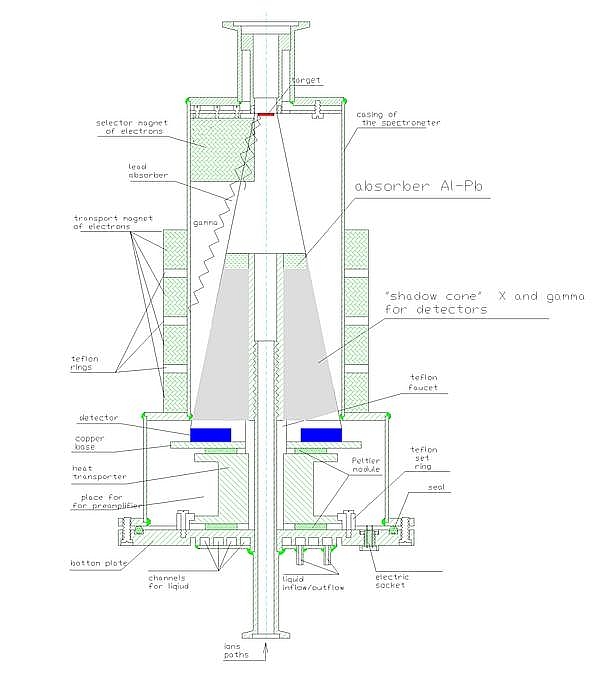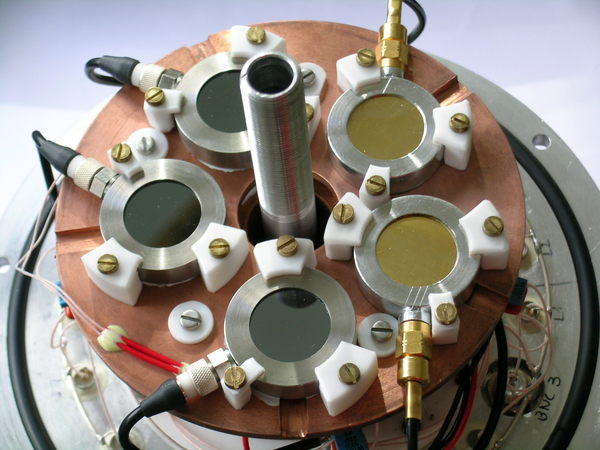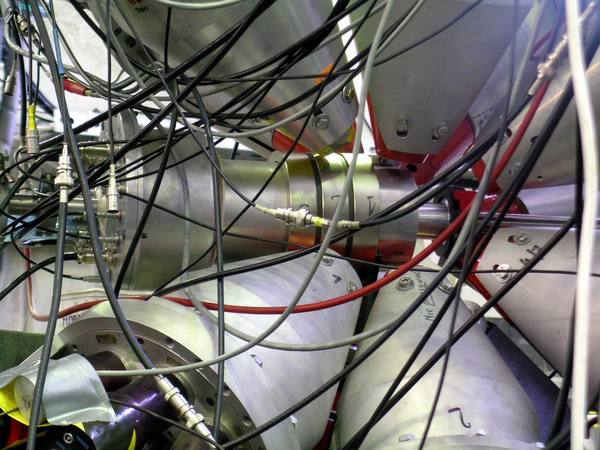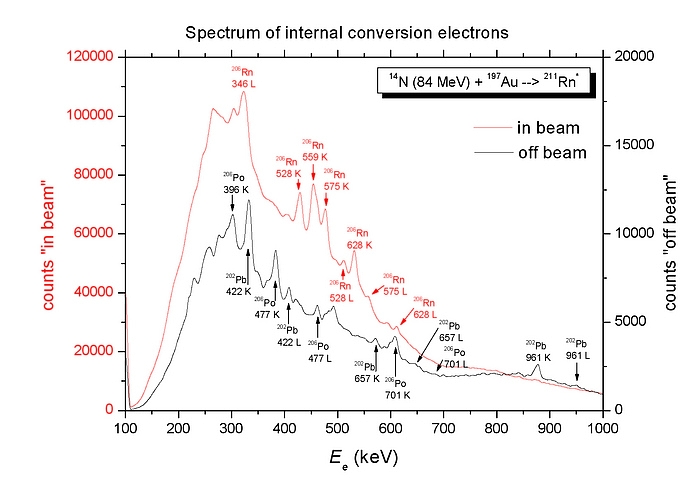

















Spectroscopy of internal conversion electronsJ. Andrzejewskia, M. Kisielińskib,c, A. Kordyaszb, A. Kormanc, M. Kowalczykb,d J. Kownackib, A. Króla, J. Perkowskia, R. Wojtkiewicza
a University of Lodz Contact: J. Andrzejewski, jozefan(at)uni.lodz.pl Spectrometry of internal conversion electrons is very difficult experimentally, but in the same time it is especially important in present spectroscopy researches of nuclei far from valley of beta stability. Importance of these studies is underlined on all conferences concerning the structure of nucleus and in a numerous publications because of complementary of electron conversion spectroscopy and gamma spectroscopy. Complementarity consists in possibility of synonymous determination of multipolarity of gamma transitions in uncertain cases or in getting information on excitation levels, gamma transitions between which are forbidden by quantum mechanics rules. Therefore, the spectrometry of internal conversion electrons is in some cases the only way to determine spins and parity of excitation levels of nuclei. The simultaneous spectroscopy of internal conversion electrons and gamma photons in coincide measurements is powerful tool for complex study of atomic nuclei created during nuclear reactions, in particular for estimation parameters of nuclear state and sequence of their de-excitation. Initially the plain spectrometer of internal conversion electrons was designed in Division of Nuclear Physics (DNP) at the University of Lodz. This spectrometer consisted of one silicon detector Si(Li) about 1.5 mm in thickness and had a solenoidal type magnet for transportation electrons from target area to the detector. Measurements performed in HIL, Warsaw University showed that spectrometry of internal conversion electrons is only possible in a period time off-beam because of overcharging the silicon detector in a period time in-beam. On the basis of collected experience and after careful analysis of publications concerning discussed question it was built the new multi-detector spectrometer of internal conversion electrons aimed to work in-beam mode. In the new set-up magnetic field in two different geometries was used. Permanent magnets as electron selector was applied in geometry similar to used in mini orange spectrometers. However, to transport selected electrons in direction of silicon detectors rings of permanent magnets made from Nd-Fe-B were also applied. The set-up was preliminary tested in beam of the Warsaw cyclotron (in Heavy Ion Laboratory) in January 2006. The main features of new electron spectrometer are following:
The scheme of the new electron spectrometer is presented in Fig. 1. The pictures of the spectrometer: outer view and its detection area (interior) are presented on in Figure 2 and 3. The construction of set-up allows use the electron spectrometer together with the OSIRIS II multi-detector germanium detectors array, which is placed at HIL, it is shown on in Figure 4 and 5. The electron spectrometer was built thanks to KBN grant received by our team in 2004. The financial support allowed not only to build the spectrometer but also to buy an electronic equipment for data acquisition system. The experimental set-up was tested in beam by used reaction: 14N + 197Au producing mainly 206Rn nucleus with emission 5 neutrons. The example spectrum of internal conversion electrons from this reaction is presented in Fig. 6.
Fig. 1 The scheme of the new spectrometer of internal conversion electrons.
Fig. 2 The outer view of new spectrometer of electrons built in DNP UŁ.
Fig. 3 The interior (detection section) of the new electrons spectrometer. Three detectors PIPS type (made by Canberra, effective thickness 0.7 mm, active area 300 mm2) and two Si(Li) detectors (effective thickness 1.5 mm, active area 300 mm2) are shown.
Fig. 4 The new spectrometer of electrons combined with the OSIRIS II array at HIL in Warsaw.
Fig. 5. The new spectrometer of electrons combined with the OSIRIS II array at HIL in Warsaw.
Fig. 6. The summarised spectrum of internal conversion electrons received from reaction: 14N + 197Au (in full amplitude window of photons). The isotopes 202Pb and 206Po arise from decay of 206Rn. |








